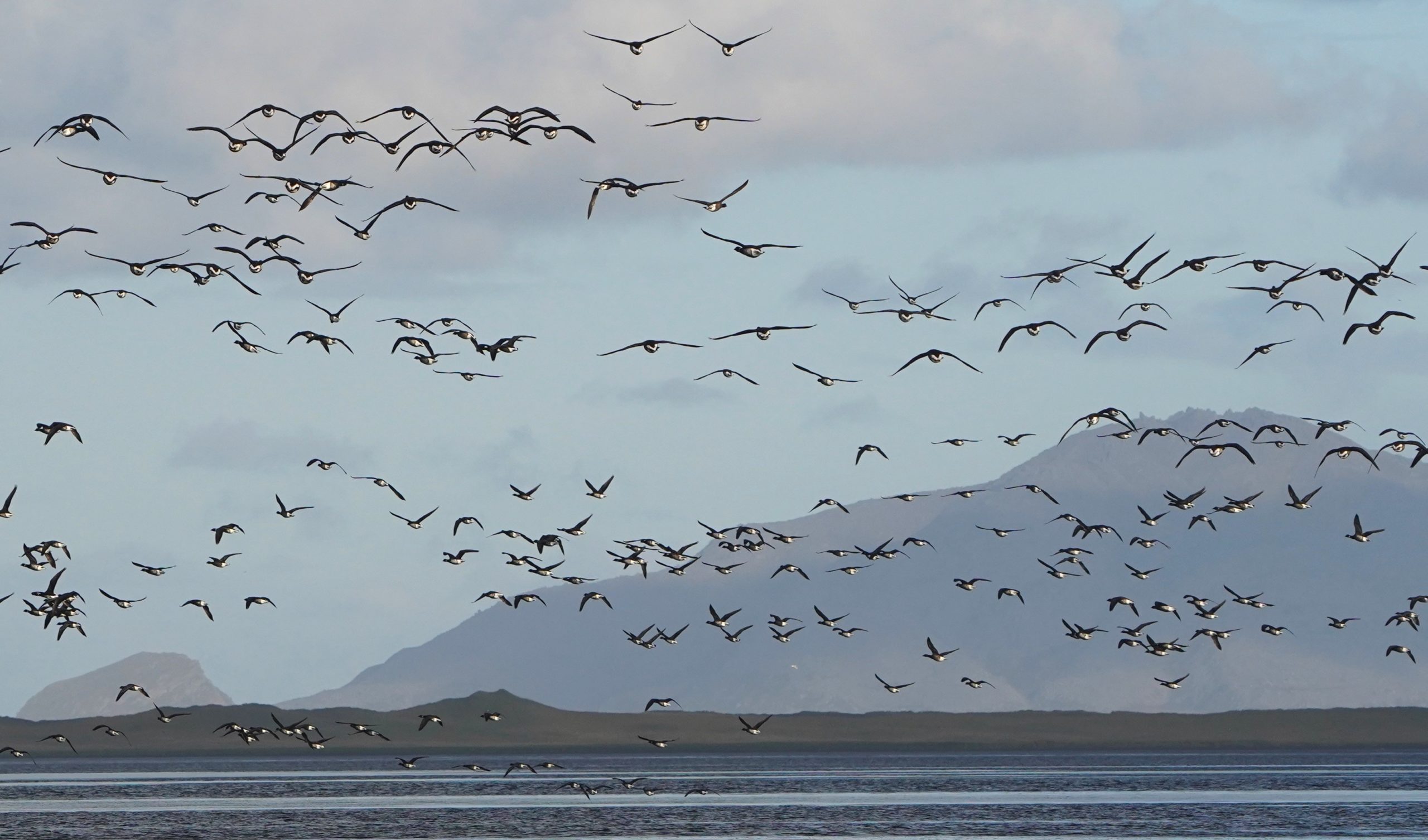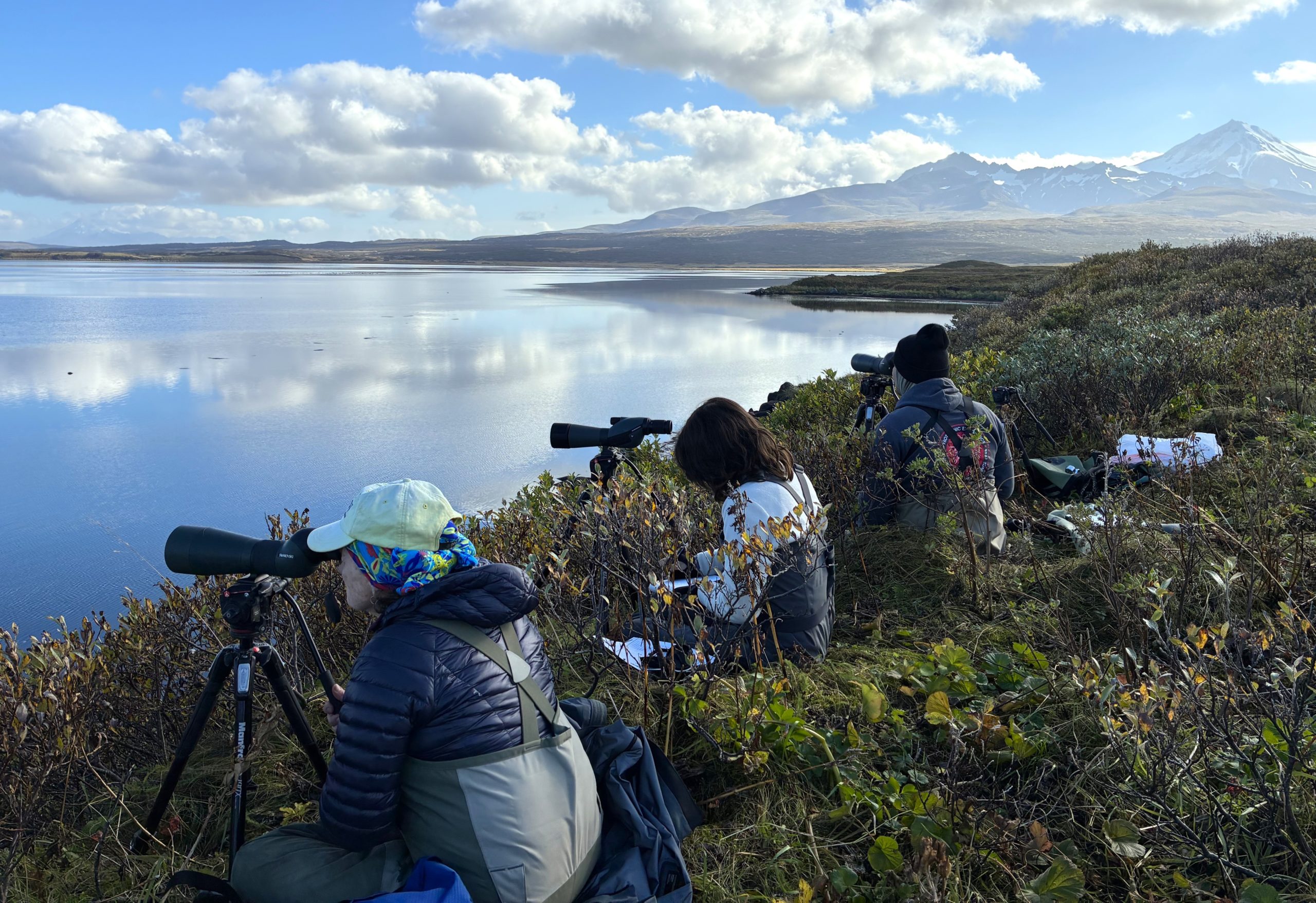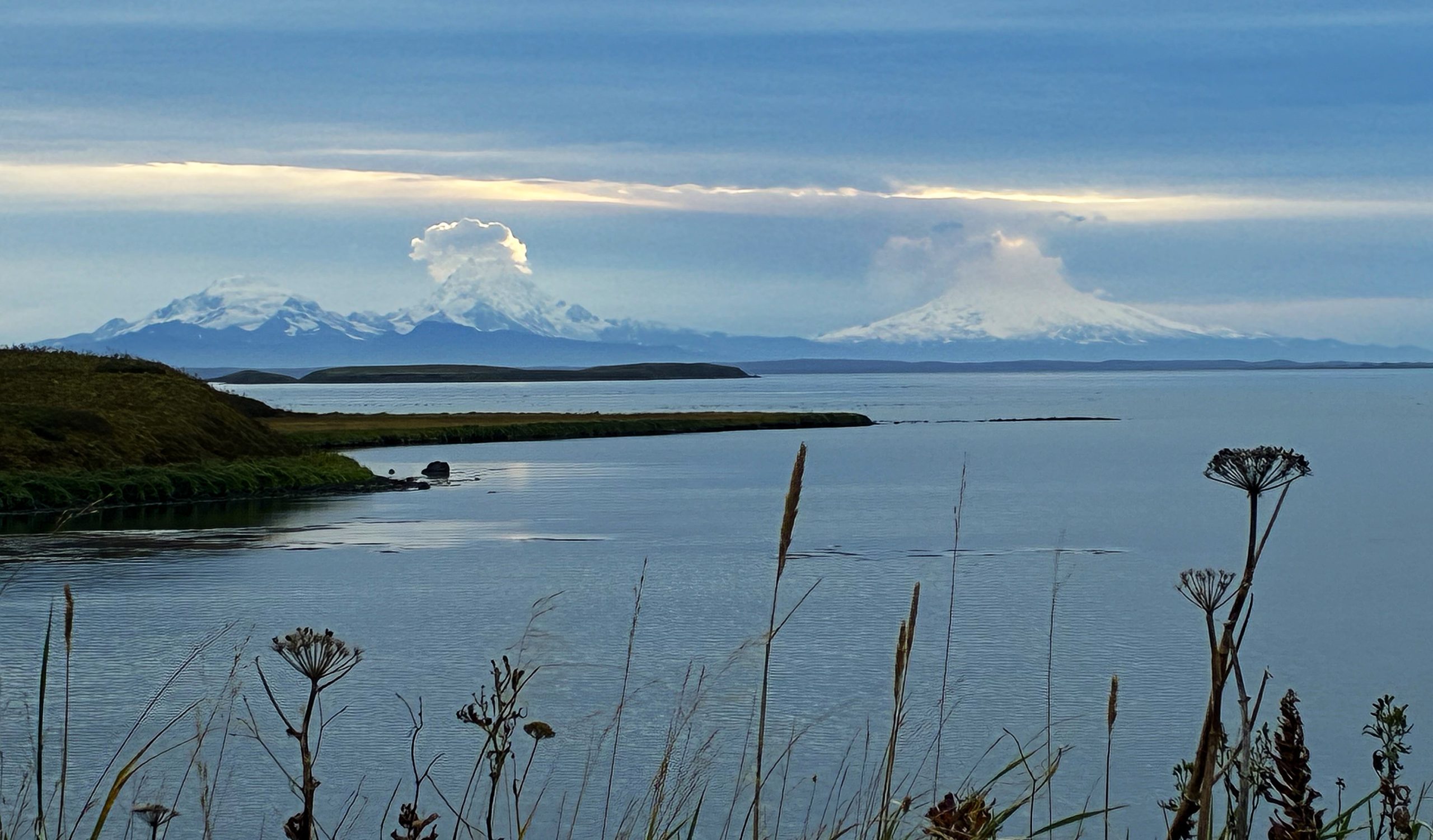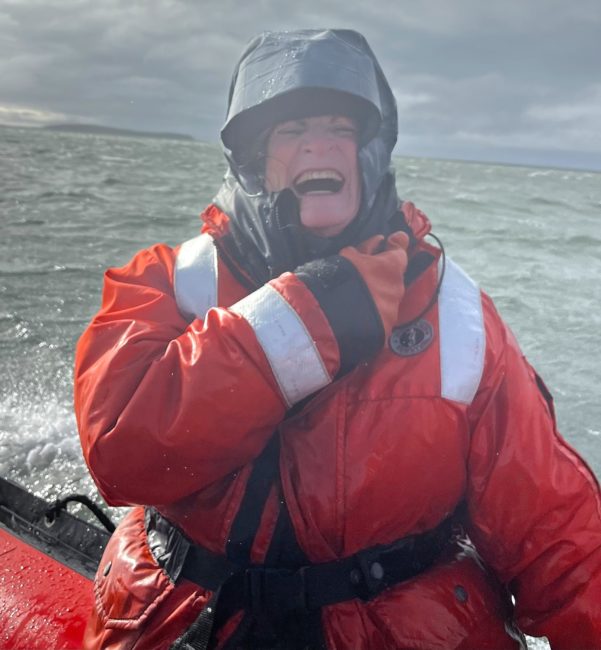By Moira O’Malley, Fairbanks Friend
This has been a very difficult article to write. I spent almost a month in Izembek this fall helping with surveys as a Friends volunteer. A couple of days after I arrived home it was announced “the Trump administration is moving forward with a controversial land deal to allow for the construction of a road through the Izembek National Wildlife Refuge” (WAPO, 10/23/25). I can’t write without choking up.
I had always wanted to visit Izembek after first hearing about it 25 years ago while teaching in Chignik Lake on the other side of the Alaska Peninsula. I knew the refuge was special, but didn’t realize how special until witnessing it firsthand. I don’t think my words can even begin to do justice to Izembek so watch the 13-minute documentary Izembek produced by Cornell Lab of Ornithology. Izembek is one of Alaska’s many treasures, a fragile, rich environment, breathtaking, wild, and pristine.
Pacific Black Brant on Izembek Lagoon, one of the largest eel grass beds in the world. PS Alison Williams/USFWS
Izembek Refuge, Alaska’s smallest refuge, lies between the highly productive waters of
the Bering Sea and the Gulf of Alaska. The heart of the refuge is Izembek Lagoon, a coastal ecosystem that’s home to one of the world’s largest eelgrass (Zostera marina) beds. Hundreds of thousands of waterfowl, including virtually the entire population of Pacific Black Brant, visit the lagoon to feed on eelgrass and rest during migration. From brown bears to salmon, more than 200 species call this refuge home.
What does one do when your volunteer stint is abruptly canceled due to the government shutdown? Wait patiently. I arrived at refuge headquarters in Cold Bay to start work on Monday, September 29th. The government shutdown two days later, on Wednesday. I had the choice of going home or staying, but there was no way I was leaving after waiting so long to finally experience Izembek. The waiting game paid off. We were back to work on Friday, October 3, after the project was declared exempt from the shutdown because the data was necessary to determine the brant hunting season.
Scoping Brant on a good day at Izembek National Wildlife Refuge. PC Williams/USFWS
We were trained to distinguish brant adults from juveniles; and how to use a spotting scope to observe, identify, count, and record the number of adult and juvenile brant. However, the most important skills to have are a positive attitude and willingness to learn! Some of the challenges included: jumping in and out of an inflatable boat: trapsing in wading boots over wet, uneven, boggy, tundra, tussocks and hummocks; sinking and getting stuck, in silty eel grass beds; army crawling to avoid disturbing wildlife, especially brant; and knowing what to do while waiting out the bad weather, which could be wind, rain, hail, snow or cold, and possibly all at the same time! Did I say wind? Layering clothing and knowing there is a hot shower at the end of the day certainly helped!

Nearly the entire world’s population of Pacific Black Brant stop in Izembek Lagoon during migration. Two adults and a juvenile. PC Alison Williams/USFWS
What I gleaned most from my experience was, yes, learning about and appreciating this miniscule but powerful ecosystem, but just as important, the camaraderie and passion of individuals coming together to work with a common interest- waterfowl, specifically brant. Our fearless, impressive, full of life leader was the Refuge Wildlife Biologist Alison Williams. Alison is one of the three remaining staff at the refuge. The other two are Manager Maria Fosado and Deputy Manager Jeff Kalin. Alison’s passion, enthusiasm, and upbeat personality kept the crew together and happy, especially with all the confusing news about the shutdown. Other volunteers included Yusuke, a researcher from Yamashina Institute of Ornithology in Japan; Honorio, a recent Oregon State University graduate; Louis, Friends volunteer from Homer; and Michael, from the Fish and Wildlife Migratory Birds Office.
In addition, five biology technicians from other refuges worked on another brant project. I was surrounded by Bird Nerds and loved every minute of it! The bio techs who hailed from the “Lower 48” were excited about experiencing Izembek. There were many firsts for them and plenty of wildlife to see including brown bears, wolves, fox, walrus, harbor seals, sea otter, and Stellar’s sea lion.
The passion I saw in these young people gives me so much hope for the future. One bio tech stated, “Alaska takes a hold of you and doesn’t want to let go.” This was certainly my experience at Izembek!
A special thank you to Maria, Jeff and Alison for the generous hospitality and warm welcome to the refuge!
And the scenery wasn’t too bad either! Shishalden Volcano, one of the most active in the Aleutians, on the Alaska Maritime National Wildlife Refuge as seen from Izembek National Wildlife Refuge. PC: Moira O’Malley/Friends
